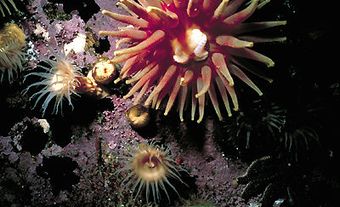
Prince Edward Island National Park (est 1937, 21.5 km2) is a narrow strip of coastline stretching over 40 km along the north shore of PEI.
Natural History
The park is a fragile seascape of red sandstone cliffs and sweeping beaches, backed by shifting sand dunes held together by the delicate roots of slender grasses. Inland are forests of spruce and birch inhabited by raccoon, skunk, red fox, muskrat and mink. Saltwater marshes and inland ponds are havens for migrating shorebirds. Many species, eg, the great blue heron and the rare piping plover, nest here.
Human History
The area was inhabited over 10 000 years ago by the Maritime Archaic people. More recently, Mi'kmac spent their summers on the coast. Europeans first arrived in the 15th century. About 200 years later settlement occurred and farming and shipbuilding gained importance. Green Gables, the house that inspired Lucy Maud Montgomery's classic novel Anne of Green Gables, is perhaps the most famous feature of the park. A historic plaque within the park commemorates the site, and the house is open to the public.
Facilities
A variety of private cottages and hotels are available in the park, as well as 3 campgrounds. The red sand beaches and relatively warm salt water attract many visitors in the summer.

 Share on Facebook
Share on Facebook Share on X
Share on X Share by Email
Share by Email Share on Google Classroom
Share on Google Classroom


